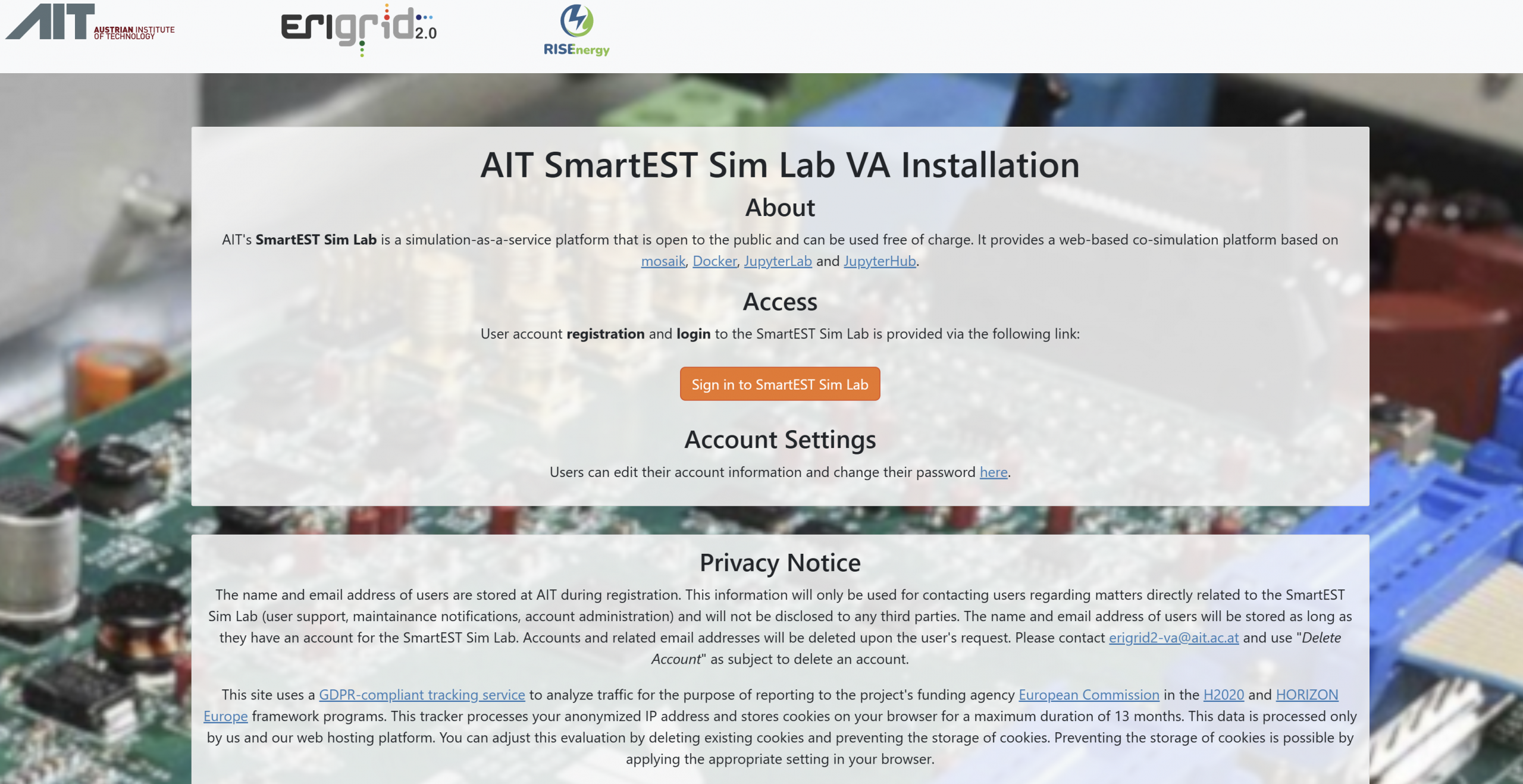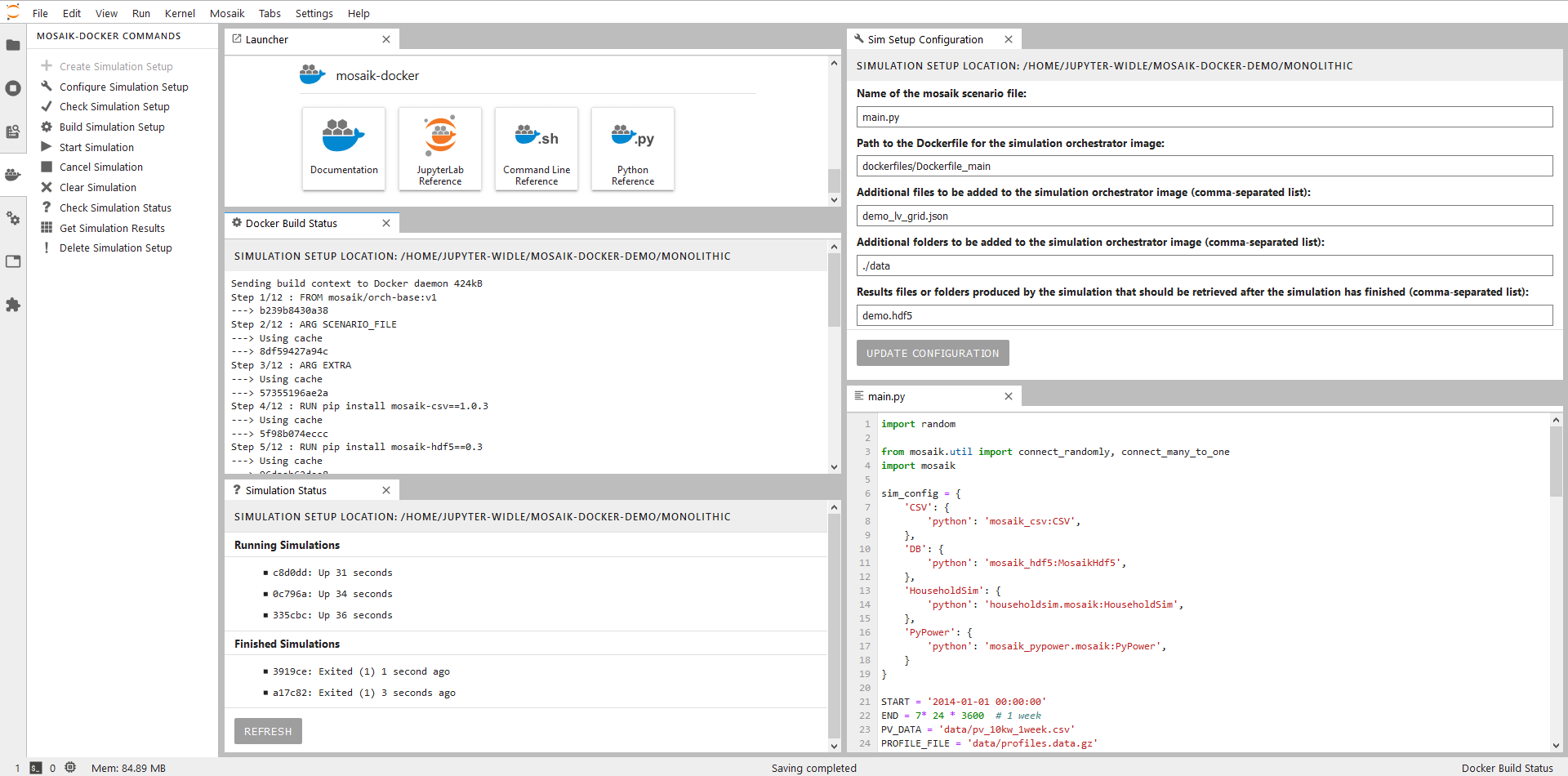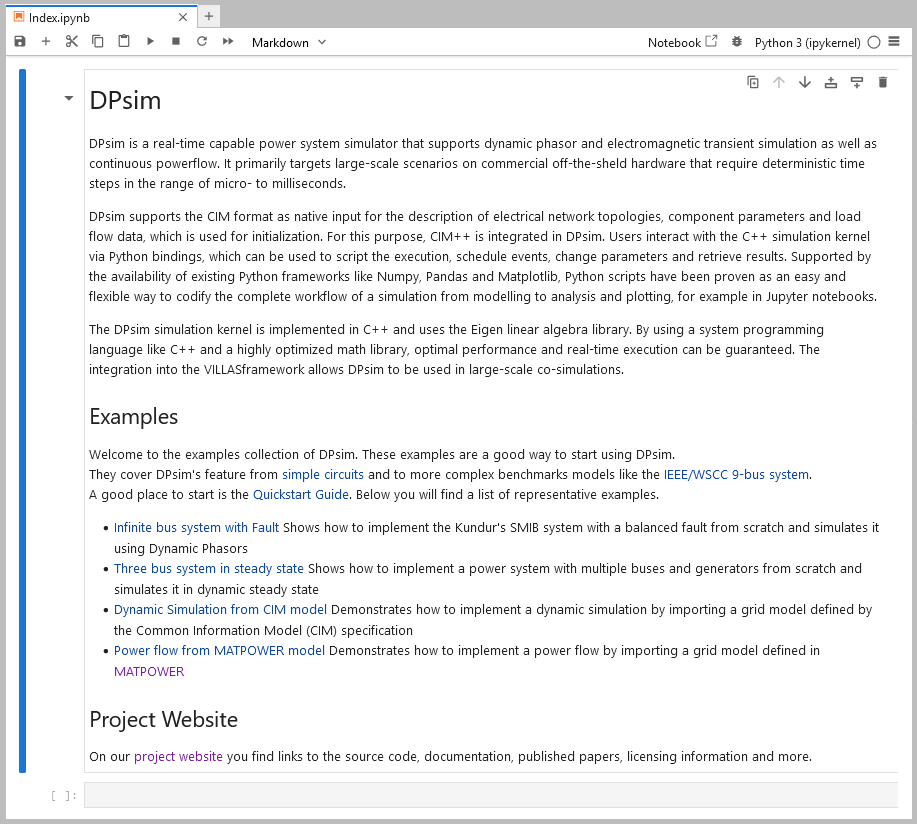Within the RISEnergy project network, Virtual Access (VA) to Research Infrastructure (RI) services are provided by three consortium partners:
- AIT EnergySim Lab
- RWTH Vlab
- FZJ XR4MAT
These services, which include simulation tools and databases for renewable energy technologies, are provided “as-a-service” and are made freely available to industrial and academic researchers during the all project lifetime.
No specific application forms or proposal submission is requested for VA.
Key Principles
The core VA principles in RISEnergy are as follows:
- The provided virtual data, services, and resources are, wherever possible, openly and freely accessible under open access licenses. These resources are available through communication networks, in this case, the project website.
- The VA scheme allows for fast, easy, and casual access to existing virtual resources by removing administrative barriers. Notably, no user selection process is required. Access is granted through web-based interfaces, which may require a user login to utilise the services offered.
- Users can try the provided virtual services without obligations.
- In most cases, individual supervision is not offered to users. However direct contact information is available for each virtual service.
Access Procedure
To start, potential users select the relevant virtual service from those listed on the “Virtual Infrastructure” tab, which serves as the main entry point for VA and describe all available services.
By selecting a specific service, users are redirected to the VA facility itself where they can immediately begin utilising the virtual services. In case of potential questions, users can get in direct contact with the VA service provider.
Additionally, VA may or may not require user identification. This can be managed through a user login system and automated verification methods to prevent service abuse. The need for user identification depends on the policies of the respective RI access providers.
If the results are being published, users should acknowledge the use of the related RISEnergy VA service.
Single Sign-on System
Certain VA facilities may require users to register and authenticate themselves with a username and password. This process is crucial for linking a user to their account, which may include ongoing project files or results on the provider’s infrastructure. User logins also serve as a measure to prevent the abuse or misuse of the infrastructure. RISEnergy has opted to offer a common Identity Provider (IdP) for the VA facilities AIT EnergySim Lab and RWTH Vlab.
Virtual Research Infrastructures
The RISEnergy project offers free access to virtual data and services through its virtual access (VA) programme, enabling industrial and academic researchers to utilise the following virtual infrastructures:
AIT EnergySim Lab
Vienna, Austria
Access this virtual facility here
Contact: erigrid2-va@ait.ac.at
The AIT EnergySim Lab is a state-of-the-art, web-based simulation-as-a-service platform developed by the Center for Energy of the AIT Austrian Institute of Technology (AIT). It provides a powerful virtual infrastructure for the co-simulation of complex smart energy systems, enabling researchers, developers, and innovators to model, test, and validate advanced energy solutions remotely.

The platform is based on a modular and scalable architecture using mosaik, Docker, JupyterLab, and JupyterHub, allowing for flexible and reproducible experimentation across multiple domains such as power systems, ICT, and automation. Accessible via a web interface, it simplifies the setup and execution of simulations without requiring local installations. Its support for integrating diverse simulation models makes it ideal for cross-domain energy system analysis.

Services currently offered by the infrastructure
As part of the RISEnergy VA infrastructure, the AIT EnergySimLab provides:
- A web-based co-simulation environment for smart energy systems.
- Integration of FMI-compliant models and custom simulation components.
- Interactive development and analysis using Jupyter notebooks.
Support offered under this project
The AIT Center for Energy, with around 300 experts in science and engineering, offers:
- Free access to the simulation platform under the RISEnergy VA scheme.
- Technical support and onboarding assistance.
- Expert guidance for experiment design and simulation setup.
- Collaboration opportunities with industry, utilities, cities, and research institutions.
Extraordinary scientific aspects and possibilities of the infrastructure not available through other infrastructures
This virtual infrastructure builds on experience from the ERIGrid 2.0 project and has already supported multiple VA users. Its unique features include:
- Cross-domain co-simulation capabilities using mosaik
- Fully virtual, scalable, and reproducible simulation workflows.
- Modular and extensible design for integrating user-defined models.
- Interactive experimentation via JupyterLab.
- Promotion of open science through shareable, version-controlled simulation setups.
Further information and links:
- Using the mosaik-docker JupyterLab extension: https://mosaik-docker.readthedocs.io/projects/jupyter/en/latest/usage.html
- mosaik-docker documentation: https://mosaik-docker.readthedocs.io/
- mosaik framework: https://mosaik.offis.de/
- Docker: https://docs.docker.com/
- JupyterLab and JupyterHub: https://jupyter.org/
RWTH Vlab
Aachen, Germany
Access this virtual facility here
Contact: andres.acosta@eonerc.rwth-aachen.de
RWTH VLab is a power systems simulation platform based on the open-source real-time simulator DPsim. It allows users to implement power system simulations using Python and Jupyter notebooks. Furthermore, it includes multiple example Notebooks for component testing, transmission and distribution benchmarks, and advanced simulation methods.

The RWTH VLab consists of power system component libraries supporting AC one-phase and three-phase elements. Moreover, it can import grid models specified using the Common Information Model (CIM)/CGMES, or from MATPOWER. Additionally, DPsim supports a power flow solver and a Resistive-Companion Modified Nodal Analysis (RC-MNA) solver for dynamic simulation including three domains: RMS, EMT, and Dynamic Phasors.

Services currently offered by the infrastructure
As part of the RISEnergy VA infrastructure, the RWTH VLab provides:
- A web-based simulation platform for power systems.
- Integration of grid models defined in CIM-CGMES standard and MATPOWER.
- Interactive development and analysis using Jupyter notebooks.
Support offered under this proposal
The Institute for Automation of Complex Power Systems (ACS), with around 50 experts in science and engineering, offers:
- Free access to the simulation platform under the RISEnergy VA scheme.
- Technical support and onboarding assistance.
- Expert guidance for experiment design and simulation setup.
- Collaboration opportunities with industry, utilities, cities, and research institutions.
Extraordinary scientific aspects and possibilities of the infrastructure not available through other infrastructures
This virtual infrastructure builds on experience from the ERIGrid 2.0 project and has already supported multiple VA users. Its unique features include:
- Solvers for load flow and dynamic simulation in the RMS, EMT and Dynamic Phasor domains.
- Fully virtual, scalable, and reproducible simulation workflows.
- Modular and extensible design for integrating user-defined models.
- Interactive experimentation via JupyterLab.
- Promotion of open science through shareable, version-controlled simulation setups.
Further information and links
- DPsim documentation: https://dpsim.fein-aachen.org/docs/
- Docker: https://docs.docker.com/
- JupyterLab and JupyterHub: https://jupyter.org/
FZJ XR4MAT
Jülich, Germany
Web site address: Available on meta quest (Contact us)
The energy materials analytics and mixed reality visualisation, designed and developed at FZJ-IEK-13, is an integrated mixed reality data visualisation platform with capabilities in modelling, simulation and testing data acquisition, data augmentation and data visualisation. It is currently specialised for hydrogen and fuel cell testing data, analysis of performance data and connecting to materials acceleration platforms and robotics labs for ink and catalyst-coated membrane preparations. The virtual environment is also supported by tools and data for creating digital twins at the cell and stack levels of production.
Services currently offered by the infrastructure:
- Immersive big-data visualisation at cell and stack level.
- Data augmentation for remote lab access.
- Digital twins.
- Integration to self-driving labs and automated orchestration software and full visualisation of the data.
Support offered under the RISEnergy project:
- Working with unique facilities for training purposes.
- High-quality data visualisation and testing of physical models.
- Supporting immersive experience to remotely run and orchestrate self-driving labs for fabrication of components and cells for electrolysers and fuel cells.
Extraordinary scientific aspects and possibilities of the infrastructure not available through other infrastructures:
- The only end-to-end software and data visualisation mixed reality environment which has already deployed an immersive XR facility dedicated to H2 technologies.
